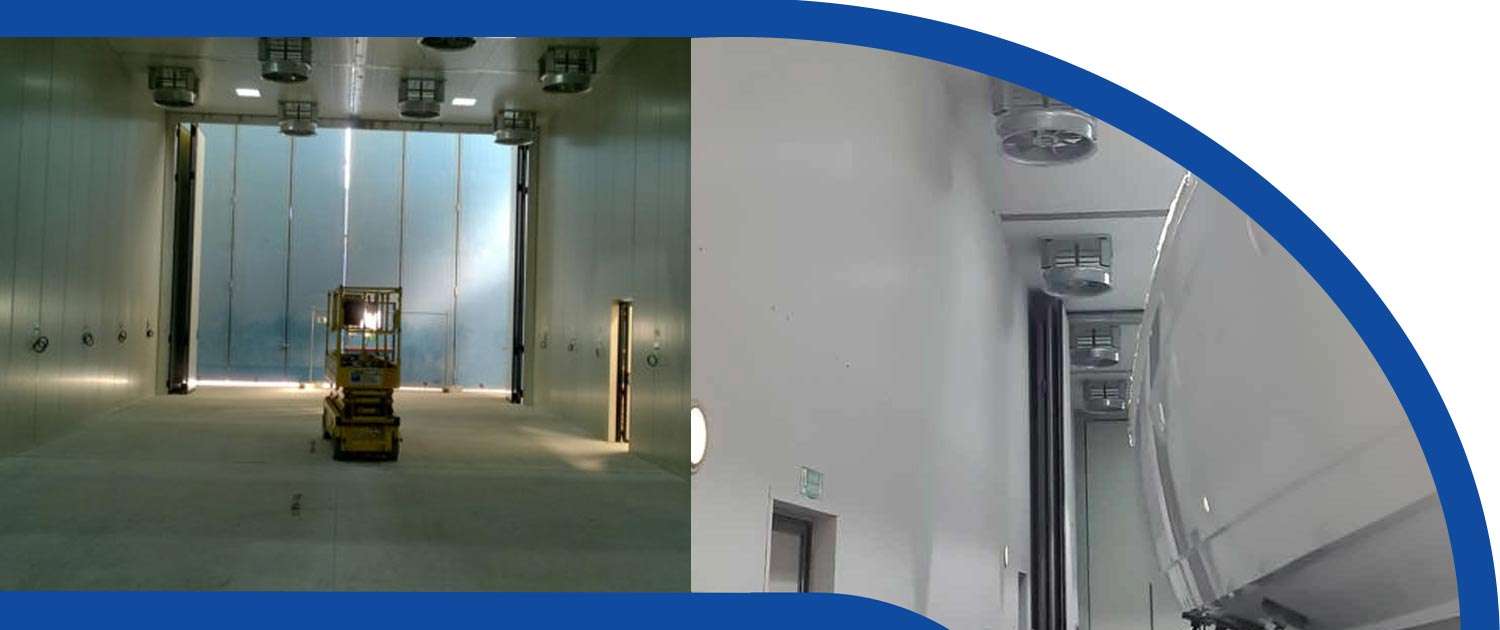
DRYING RESINS TUNNEL POST CURING – PERKS AND BENEFITS
The whole project designed and studied by BP Automation is a model of energetic efficiency, as the construction concept is based on the total absence of thermal dispersion.
The insulating panels charcterized by great thickness (100 mm) grant the absolute absece of dispersion. There are not edges inside the tunnel, as they are hurdle for the free air flow, while the vents are bidirectional and they can be used to warm up the area, by sucking the air from the central part, by blowing, to create an air flow aimed to warm up a single manufact, saving energy.
Furthermore, the energetic source (resistances) is supportive to the vents which regulate the air movements and flow. This allows the whole system to exploit of these innovative technological advantages.
The finned resistances are involved in both the air sucking and blowing processes. The air laps the resistances in the two flow’s directions.
Therefore, until the system reach the temperature of 45°C, the air attrition on the finned resistances and on the vent does not request energy supply in the resistances themselves (in some cases it is necessary to to module the vents’ speed).
As the place is sealed, proveded with electricalluy inter-bocked doors and devoid of fissures, the only point of energy dispersion is represented by the suction system which maintain the tunnel at minus 20mm Col. H2O of depression. It not possible for powder to find a way in or for dangerous fumes to exit from the tunnel dispersing in the environment.
Another fundamental aspect is the temperature homogeneity maintenance.
The number of vents is vey high (nr.24) in relation tothe area of the place and the amount of air moved, therefore it is possible to obtain a complete control of the tunnel’s temperature.
The temperature monitoring is delegated to three PT 100 probes which control every single vents, there are 72 probes in total. Every probe is provided with other probes (contact type) which comes from wall outlets with cable and plugs, so that it is possible to apply them even in the dark places of the hull. A third probe is located above the vent, inside the resistance group, in order to avoid for the air temperature tu overcome pre-determined values which could undermine the artefact.
The result is a temperature homogeneity around +/- 0.5°C in the whole artefact, for the whole working cycle.
Thanks to dedicated work recipes, it is possible to treat different components with different characteristics in the same place, maintaining the temperature’s precision on the piece in treatment.
In conclusion, the tunnel presents a modular structure, included two internal compartmentalisation doors.
![]()
![]()

